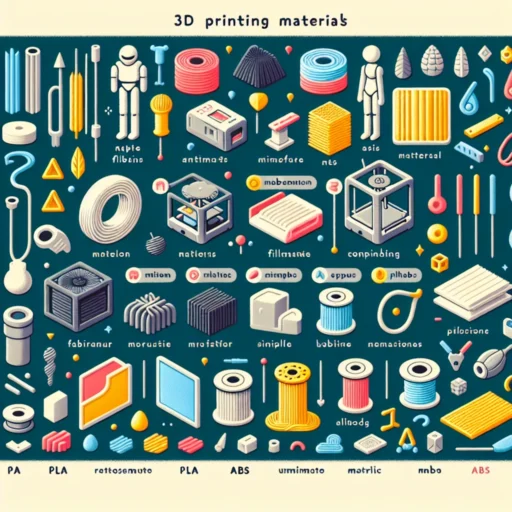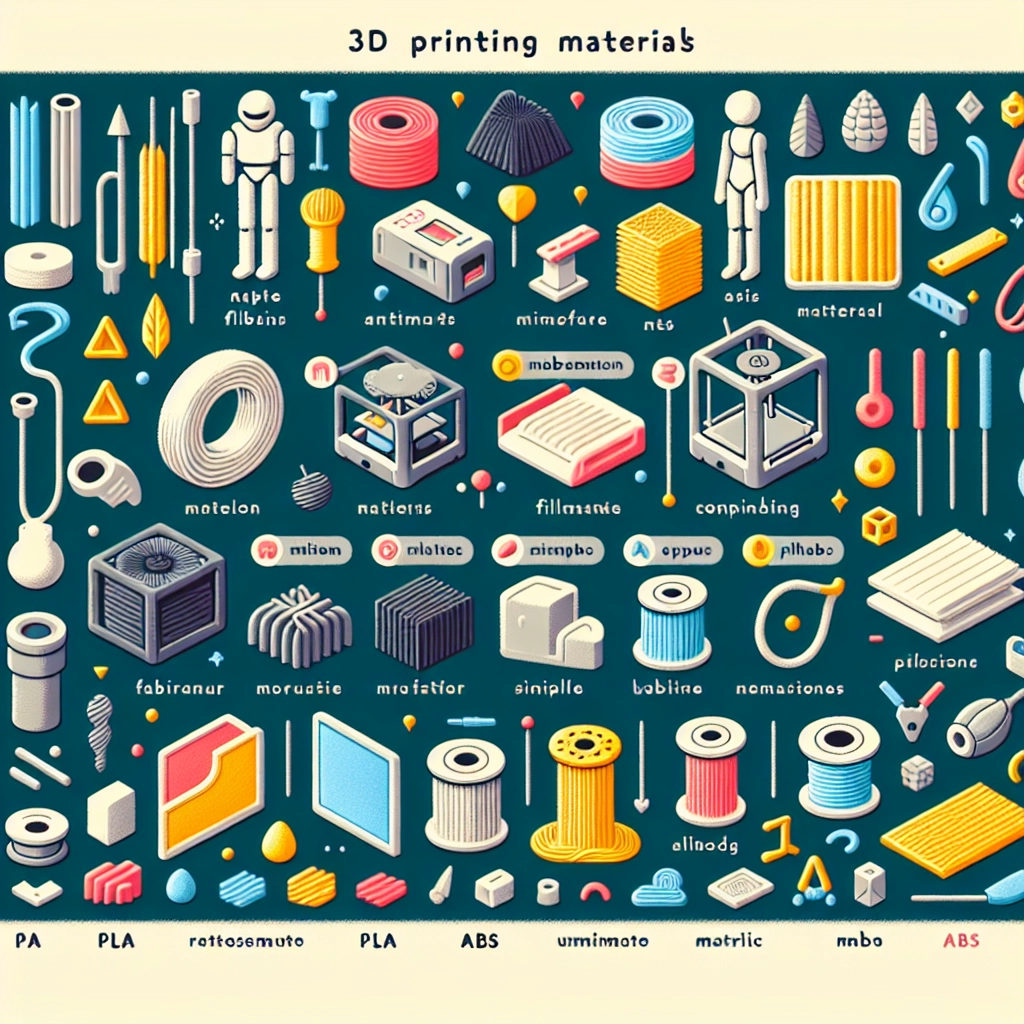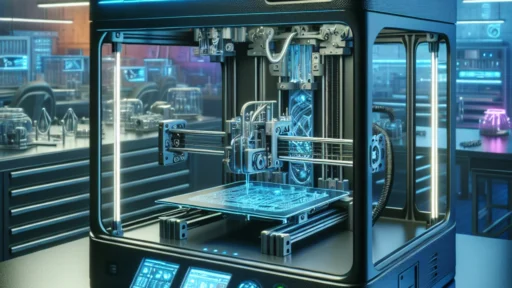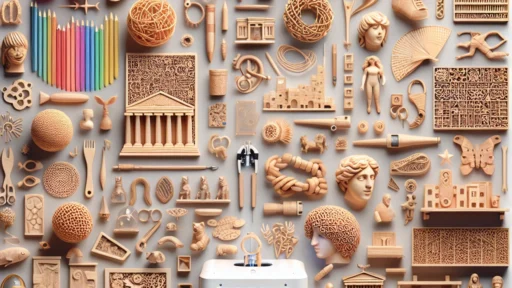3D Filament Types Explained: PLA, ABS, and Beyond
When you dive into the exciting world of 3D printing, one of the first things you’ll encounter is the vast array of filament types available for your printer. The choices can be overwhelming, especially if you’re just starting. Not to worry, though! In this post, we’ll break down a few of the most popular filament types—PLA, ABS, and beyond—so you can choose the best one for your project.
PLA: The Friendly Beginner
Let’s start with PLA, or Polylactic Acid, which has become the go-to filament for newbies and seasoned pros alike. PLA is derived from natural sources, such as corn starch or sugarcane, making it biodegradable and eco-friendly. If you’re looking to start 3D printing with minimal fuss, PLA is your best bet.
You’ll find that PLA is very forgiving to work with. It sticks well to the print bed, has a low warping tendency, and prints at relatively low temperatures (around 180-220 °C). Plus, it comes in a rainbow of colors, including some super fun options like glow-in-the-dark and metallic finishes.
However, PLA does have its weaknesses. It isn’t as strong or heat-resistant as some other materials, which means your printed items may not be suitable for high-stress applications or exposure to high temperatures. Still, for decorative items, prototypes, or hobby projects, PLA is a fantastic choice.
ABS: The Tough Guy
Next up is ABS, or Acrylonitrile Butadiene Styrene. This is where things get a bit more complex. ABS is the sturdy hero of the 3D printing world, known for its strength, resilience, and ability to withstand higher temperatures. If you’ve ever played with LEGO bricks, you’ve held a piece of ABS in your hands since that’s what they’re made from!
When printing with ABS, you’ll need to keep a few things in mind. First, it requires a higher printing temperature (about 210-250 °C) and benefits from a heated print bed to prevent warping—that means it’s not the friendliest material for beginners. You may also experience some curling at the edges of your print, so a well-calibrated setup is essential.
One area where ABS really shines is in functional parts or prototypes. Its excellent impact resistance makes it ideal for items like phone cases, car parts, and other functional objects. However, it’s worth noting that ABS isn’t biodegradable and emits a bit of odor when printing, so make sure you have proper ventilation!
PETG: The Best of Both Worlds
Now that we’ve covered PLA and ABS, let’s introduce PETG, which stands for Polyethylene Terephthalate Glycol. If you’re looking for a middle ground between PLA and ABS, PETG might just be your new best friend.
PETG combines the ease of printing that PLA offers with the strength and durability of ABS. It prints at a temperature range of 220-250 °C and is known for its excellent layer adhesion, making it less prone to warping. Plus, it is both impact-resistant and temperature-stable, giving it an edge for functional parts that may encounter stress.
What’s more, PETG is also food-safe when printed without additives, meaning you could even try making containers for your snacks! The downside? It can sometimes string a little more than PLA, which might require some extra tuning on your printer.
Other Noteworthy Filaments
Beyond PLA, ABS, and PETG, there’s a whole world of specialized filaments. Here are a few more options that might pique your interest:
-
TPU (Thermoplastic Polyurethane): A flexible filament, TPU is perfect for printing items that need to bend or stretch, like phone cases or rubber-like parts.
-
Nylon: Known for its toughness and flexibility, nylon is great for functional items that need to withstand compression.
-
Wood Filament: This blend of PLA and wood fibers allows you to create prints that look and feel like real wood, offering a beautiful finish.
-
Carbon Fiber Filament: A strong material that adds rigidity to prints, carbon fiber-infused filament is excellent for parts that require additional durability.
Choosing the right filament for your 3D printing venture can feel like a balancing act, but understanding the properties, strengths, and limitations of each type can help make your decision easier. Whether you’re crafting a character, prototyping a part, or experimenting with new designs, the right filament will empower your creativity. Happy printing!






